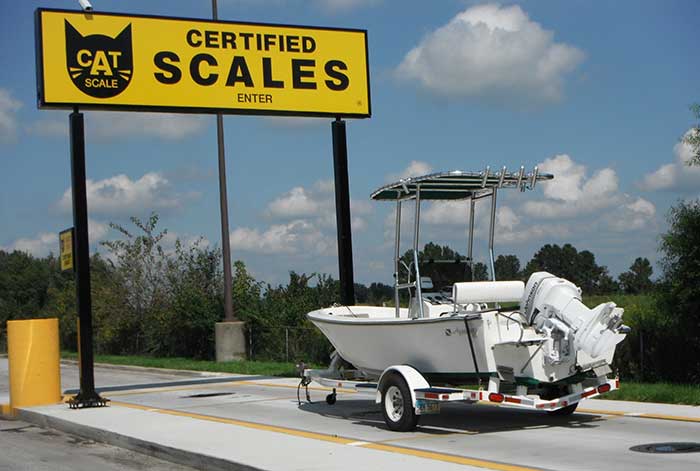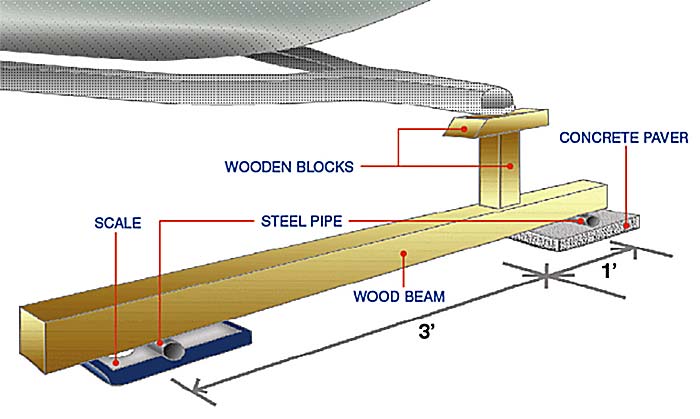Advertisement
Every trailer owner needs to know the weight of the trailer tongue on the hitch.

Too little tongue weight leads to swaying and fish-tailing at highway speeds. Too much and the tow vehicle can become difficult to steer. Your tongue weight should be 7-10 percent of the total trailer weight. Here are two methods to finding the tongue weight of your trailer.
Truck Scale — The Easy Option
Most commercial truck scales will weigh trailered boats for a small fee. Pull the truck onto the scale, leaving the trailer hooked up to it, but having the wheels of the trailer off the scale. Get the weight, let's say it's 4,600 lbs. Then drive off the scale, disconnect the trailer, and drive the truck back on the scale again and weigh it only; let's say the truck weighs 4,200 lbs. The difference (4,600-4,200=400) is the tongue weight. If a truck scale isn't readily available, tongue weight can still be figured out in the driveway.
Tip
You'll know pretty quickly if your tongue weight isn't correct. See Tips for Towing a Trailer for more information.
What You'll Need:
- Bathroom Scale
- Yardstick to measure the height of the trailer tongue as it sits on the hitch ball
- 4x4 beam at least four feet long plus scraps
- Concrete Paver or bricks
- 2 Pieces of Pipe short lengths
The At Home Option
Most bathroom scales max out at 300 pounds, so when measuring the tongue weight of tandem-axle trailers that weigh more than 3,000 or so pounds, you risk wrecking your scale. To protect your scale, you need to set up a beam to spread the weight between a nice hard brick or concrete paver, and your scale. You'll also want two short lengths of pipe to act as pivots and a short piece of 4x4 to rest on the beam to keep the tongue level.

Step-by-Step
Step1: First, chock the trailer tires. In order to accurately measure the tongue weight, you'll want to set your beam up in a simple ratio of 3-to-1, or 4-to-1 if it's a heavy trailer. For a 4 to 1 ratio, you'll need at least a 4-foot-long beam. Set one end on the brick and the other on the scale. Place one piece of the pipe crosswise to the beam on top of the brick to act as a pivot. Do the same with the other piece on the scale.
Step 2: Mark the beam one foot over from where it rests on the pipe closest to the brick. This is where you'll rest the tongue of the trailer on an additional block of wood. The goal is to get the tongue to rest level as it would on the trailer hitch.
Measure three feet over from the first mark, and center the other piece of pipe crosswise under the beam at this point. Place the tongue of the trailer on the first mark. You've now distributed the weight so that more is on the brick than your scale. In fact, three times as much weight is on the brick, compared to the scale, so to get an accurate reading, simply multiply what the scale says by four. There's the tongue weight.
